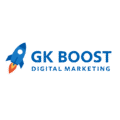In today’s digital-first world, businesses can no longer rely solely on traditional advertising to attract and retain customers. Instead, the focus has shifted to building meaningful connections, creating value, and guiding potential customers through a journey. This approach is known as inbound marketing.
But what exactly is inbound marketing, and why has it become a game-changer for businesses of all sizes? Let’s dive into a complete breakdown of this powerful marketing strategy.
What Is Inbound Marketing?
Inbound marketing is a strategy that focuses on attracting customers by creating valuable content and experiences tailored to their needs. Unlike outbound marketing, where businesses push messages out through ads, cold calls, or direct mail, inbound marketing draws people in naturally by providing solutions to their problems.
At its core, inbound marketing is about earning attention rather than buying it. It uses blogs, social media, SEO, videos, email campaigns, and other content-driven strategies to pull customers toward your brand instead of interrupting them.
The Inbound Marketing Methodology
To better understand what is inbound marketing, you need to look at its methodology. The process is often broken down into three main stages:
1. Attract
The first step is to draw in the right audience. This is done through high-quality, search-optimized content such as blog posts, social media updates, videos, or infographics. The goal is to attract people who are already searching for solutions that your business provides.
2. Engage
Once you have their attention, the next step is to engage them with meaningful interactions. This could be through offering free guides, hosting webinars, personalized emails, or interactive tools. By engaging them, you build trust and encourage them to see your brand as a helpful authority.
3. Delight
Inbound marketing doesn’t end once someone becomes a customer. The delight stage focuses on providing exceptional value after the sale, ensuring customers feel supported and appreciated. This leads to customer loyalty, repeat purchases, and word-of-mouth referrals.
Why Inbound Marketing Matters
Understanding what is inbound marketing is important because it shifts the focus from chasing customers to attracting them. Here are some of the biggest reasons businesses invest in inbound marketing:
- Customer-Centric Approach: Instead of shouting your message, you listen and provide solutions.
- Cost-Effective: Inbound methods like SEO and blogging are often less expensive than paid ads.
- Long-Term Results: Content like blogs or videos continues to bring in traffic long after it’s published.
- Builds Trust: Offering value upfront positions your brand as an authority.
- Better ROI: According to studies, inbound marketing often delivers a higher return compared to traditional marketing methods.
Key Inbound Marketing Tactics
When learning what is inbound marketing, it’s also useful to know the tactics that make it effective. Here are the most common ones:
1. Content Marketing
Creating valuable blog posts, guides, eBooks, videos, or podcasts helps answer customer questions and solve problems.
2. Search Engine Optimization (SEO)
Optimizing your website and content ensures your business appears when potential customers search online.
3. Social Media Marketing
Platforms like Instagram, LinkedIn, or Facebook help you share content, interact with your audience, and build a community.
4. Email Marketing
Sending personalized, value-driven emails keeps your audience engaged and nurtures leads into customers.
5. Lead Generation Tools
Landing pages, forms, and free resources (like checklists or templates) help capture leads and move them further along the buyer’s journey.
Inbound vs. Outbound Marketing
Many people wonder about the difference between inbound and outbound marketing. Outbound is often called “interruption marketing,” where the business pushes its message—think TV ads, telemarketing, or billboards.
Inbound, on the other hand, is permission-based. The customer chooses to engage with your content because it provides value. This is why inbound marketing is generally seen as more effective in today’s digital landscape, where customers are tired of being “sold to.”
Real-World Example of Inbound Marketing
Let’s take the example of a fitness brand. Instead of just running ads that say “Buy our protein shakes,” the brand could publish blog posts about workout tips, create YouTube tutorials on healthy recipes, or offer a free eBook on building muscle at home.
People searching for fitness advice will come across the brand’s content. Over time, as they consume more resources, they start trusting the brand. When they’re ready to purchase supplements, that fitness brand becomes the natural choice. This is inbound marketing in action.
Benefits of Inbound Marketing for Businesses
Now that you know what is inbound marketing, here are some direct benefits your business can expect:
- Generates Qualified Leads: You attract people who are already interested in your solutions.
- Strengthens Brand Authority: Regular valuable content positions your business as an industry expert.
- Improves Customer Relationships: By delighting customers, you encourage repeat business.
- Adapts to the Digital Age: In a world where people research before buying, inbound aligns perfectly with consumer behavior.
Getting Started With Inbound Marketing
If you’re wondering how to apply inbound marketing, here’s a simple roadmap:
- Know Your Audience: Create detailed buyer personas.
- Plan Your Content: Build a content calendar around your customers’ pain points.
- Optimize for Search: Use SEO best practices to increase visibility.
- Leverage Social Media: Distribute your content where your audience hangs out.
- Measure and Improve: Use tools like Google Analytics or HubSpot to track results and refine your strategy.
Conclusion
So, what is inbound marketing? It’s more than just a buzzword—it’s a customer-first strategy designed for the digital age. By creating helpful, engaging, and trust-building content, inbound marketing attracts the right audience, nurtures them into customers, and keeps them delighted long after the sale.
For businesses looking to grow sustainably, inbound marketing isn’t just an option—it’s the future.
